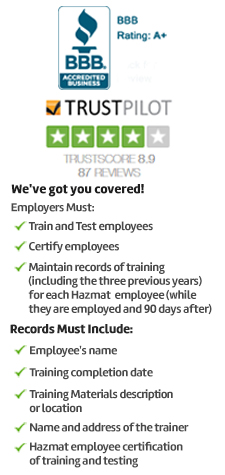
MSHA Underground Mining Personal Protective Equipment

Working at a mine presents many hazards. Understanding those hazards and how to properly use Personal Protective Equipment (PPE) to help protect against them is critical to your safety and the safety of your fellow miners. This course is designed to help you achieve a general awareness of the PPE used at underground mine sites. This course highlights various types of PPE, how to select appropriate PPE for various circumstances, and the kind of training necessary for the proper use and care of PPE.
Governing regulations
To help American mines operate safely, congress enacted the Federal Mine Safety and Health Act of 1977 (Mine Act) and the Mine Improvement and New Emergency Response Act (“MINER Act”). The Mine Safety and Health Administration (MSHA), part of the US Department of Labor, was established in 1978 to regulate the mining industry and enforce these acts.
Every person at a mine site has a responsibility to ensure that health and safety standards are observed at all times. The employer is responsible for providing information, instruction, and supervision to all workers. The supervisor is responsible for ensuring that all workers are properly trained and are compliant with MSHA and OSHA regulations. And workers are responsible for observing all MSHA and OSHA standards and practicing safe work habits.
To be MSHA compliant your company must have a training plan that is approved by MSHA and administered by a competent person. Your company can use this or any of our courses as part of that plan.
If you are unsure how to write a training plan we can help with our Part 48 Underground Mining Training Plan course, the only one like it in the mining industry.
Course Overview
Significant hazards exist at underground mine sites. They may take the form of falling objects, flying sparks, chemicals, loud noises, and many other potentially dangerous situations. In order to moderate them, miners and other individuals who work at mine sites must acquire a better understanding of the risks and hazards of working at underground mines as well as the associated preventative procedures.
Who Must Take this Course?
The course is designed for operators, supervisors, safety personnel, and all other individuals who work at underground mines.
Course Format
Our MSHA Underground Mining Personal Protective Equipment training course consists of content, graphics, audio, self-check questions, and a final exam.
Upon successful completion each student will receive Hard copy of completion certificate and can print a wallet card
Continuing education credits?
Each student will receive 0.2 CEUs (or 2 CMEs) for completing this course.
Topics Covered
- About This Course
- Course Objectives
- Introduction to the MSHA Underground Mining Personal Protective Equipment Training Course
- Examples of PPE
- Key Terms and Definitions
- Accident Statistics
- Regulatory Agencies
- OSHA Regulations
- MSHA Regulations
- Overview of PPE Responsibilities
- Employer Responsibilities
- Supervisor Responsibilities
- Worker Responsibilities
- PPE Programs
- Hazard Assessment
- PPE Training
- PPE Selection
- Maintenance and Storage of PPE
- PPE for the Eyes, Face, and Head
- Eyewear and Face Shields
- Corrective Lenses
- Head Protection
- Hard Hats
- Hard Hat Care and Maintenance
- PPE for the Body, Hands, and Feet
- Protection from Chemical and Physical Hazards
- Reflective Clothing
- Hand and Arm Protection
- Types of Protective Gloves
- Mesh, Leather, or Canvas Gloves
- Fabric and Coated Fabric Gloves
- Chemical and Liquid Resistant Gloves
- Care and Maintenance of Gloves
- Foot and Leg Protection
- Types of Foot and Leg Protection
- Protective Footwear Care and Fitting
- Hearing Protection
- Noise Intensity and Maximum Daily Exposure
- Noise Exposure Levels
- Hearing Conservation Program
- Types of Hearing Protection
- Fit and Care of Hearing Protectors
- Respiratory Protection
- Oxygen-deficient Atmosphere
- Flammable Atmosphere
- Toxic Atmosphere
- Respiratory Protection
- Respirator Components
- Types of Respirators
- Fitting
- Assigned Protection Factors
- Respiratory Protection Program
- Inspections
- Fall Protection
- Fall Protection Program
- Types of Fall Protection Systems
- Body Wear
- Emergency Equipment
- Self-Rescue
- Summary
- Additional Resources
- Exam

 NEBOSH CERTIFICATE
NEBOSH CERTIFICATE NEBOSH DIPLOMA
NEBOSH DIPLOMA IOSH
IOSH SAFETY DIPLOMA
SAFETY DIPLOMA CPD UK
CPD UK ROSPA UK
ROSPA UK FOOD SAFETY
FOOD SAFETY 



